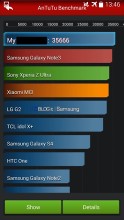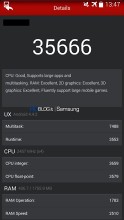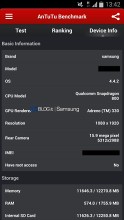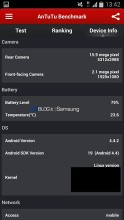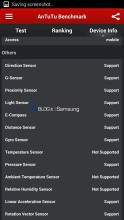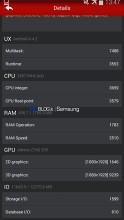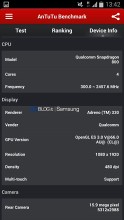
Aio Wireless, the prepaid carrier owned by AT&T, has added three new smartphones to its lineup. The Motorola Moto G can be purchased for $149.99, the Nokia Lumia 520 is priced at $99.99, and the ZTE Sonata 4G can be bought for $79.99. The latter handset is available today while the other two can be purchased starting February 14th.
The Motorola Moto G is a value priced handset that runs Android 4.4, offers a 4.5 inch screen with 720 x 1280 resolution, and is powered by a quad-core Snapdragon 400 processor with a 5MP camera around back. Ironically, the phone was designed to compete in the entry-level niche where the Nokia Lumia 520 has been cleaning up.
The Windows Phone powered Nokia Lumia 520 offers a 4 inch screen with 480 x 800 resolution, and is powered by a dual-core 1GHz Snapdragon S4 Pro with a 5MP rear-facing snapper. The ZTE Sonata 4G is an Android model with specs similar to the Lumia 520, except that it includes a faster dual-core 1.4GHz Snapdragon S4 and has twice the RAM at 1GB.
Aio offers three plans. The basic plan is $40 a month with unlimited talk, text and data (500MB of high speed data). The smart plan is $50 a month for unlimited talk, text and data (2.5GB of the high speed stuff). For $60 a month, Aio gives you unlimited talk, text and data (5GB high speed). If you agree to an Auto Pay program, you can get a discount from the carrier.

The ZTE Sonata 4G is now available from Aio
source: Aio via Phonescoop

The Motorola Moto G is now available from U.S.Cellular. Including a $90 mail-in rebate, the price of the phone is reduced to $99.99. And that price is without a two-year contract. The Motorola Moto G is equipped with a 4.5 inch screen with resolution of 720 x 1280. A quad-core 1.2GHz Snapdragon 400 is under the hood with 1GB of RAM on board. 8GB of native storage is included, although we should point out that the phone lacks a microSD slot. The back and front cameras weigh in at 5MP and 1.3MP respectively. A 2070mAh battery powers the whole shebang, and Android 4.4 is pre-installed.
The Motorola Moto G can be customized through the use of the removable rear cover. Replaceable back covers called shells are available in different colors to match your outfit. Keep in mind that even though the back cover does come off, the battery is not removable. And in addition to the usual 15GB of free cloud storage from Google Drive, Moto G buyers get an additional 50GB of cloud storage free.
We would be remiss if we didn't tell you that while you will save $90 from the rebate, you might have to spend as much as $50 to activate the phone on the carrier's pipeline. Regardless, it still works out cheaper than the $189.99 pre-rebate price of the phone from U.S. Cellular.

The Motorola Moto G is now available from U.S. Cellular for $99.99 after rebate
source: U.S.Cellular via TechRadar

Canadian carrier Rogers has updated its OS Upgrade support page on its website, and guess what? It's good news for those who use the Samsung Galaxy S4 and the Samsung Galaxy Note 3 in Rogers' neighborhood. The page now shows the Android 4.4 KitKat update "coming soon" for both top-shelf devices. The page also reveals that the HTC One mini will be receiving Android 4.4 late this month. According to a leaked HTC update roadmap we passed along last month, the byte-sized version of the HTC One will receive Android 4.4.2 and Sense 5.5.
Android flavored handsets aren't the only models getting updated at Jolly Rogers. Coming soon is the GDR3 update for a couple of Windows Phone 8 handsets. The models that will soon be updated are the Nokia Lumia 920 and the Samsung ATIV S. Among the new features will be one that allows Data Sense to block streaming in the background while roaming. Stopping the ol' data meter from running while roaming could save you enough money to make Scrooge McDuck envious.

Rogers' web site reveals OS update schedule for a few phones
source: Rogers via MobileSyrup

The quad-core Huawei MediaPad X1 tablet (which could be seen as a competitor to the Nexus 7 and Amazon Kindle Fire HDX) has appeared for the first time in a real photo, sitting next to Samsung’s 5.7-inch Galaxy Note 3. Since the MediaPad X1 sports a 7-inch display, it’s obviously significantly larger than the Note. Still, its narrow bezels allow it to remain compact.
As we already reported, the X1’s 7-inch screen has 1200 x 1920 pixels, offering a 323 ppi density. Other features should include LTE (optional), Android 4.2 Jelly Bean, a 1.6GHz quad-core HiSilicon 910 processor, 5MP rear camera, 1.3MP front-facing camera, and 2GB of RAM. The tablet weighs 239 grams and is only 7.5mm thin.
It’s said that Huawei might launch the MediaPad X1 around the world soon, offering it in two color versions: white and black. However, nothing is confirmed at this point.
source: Weibo via Blog of Mobile (translated)

Smartphone cameras have been improving at a rapid pace, and while the field owes credit to many, it is Nokia, and as of late -- Sony -- that are at the helm. Every year, we're treated to larger sensors, more and bigger pixels, larger apertures, OIS, and more features than we can count. But one thing has been missing for a long while now, and that's proper zoom. After all, many a situation necessitate that you either get closer, or miss the shot, and in those cases you're pretty much done for if you have to rely on the traditional digital zoom. Sure, the objects do appear closer, but the price is often a prohibitive loss of detail, as the images are upscaled to the desired resolution with no regard to the actual resolution. Well, thanks to the giant sensors on the Nokia Lumia 1020 and Sony Xperia Z1/Z1 Compact, zoom is no longer a problem. But instead of opting for bulky and noisy zoom lens (Galaxy S4 Zoom), they both rely on their massive resolution in order to get what we call 'lossless' zoom.
So what's lossless zoom, then? In simple terms, it means that zooming into a scene will only result in a negligible loss in quality. Think of it this way: if your camera shoots a picture in a RAW format, the resulting file will contain all the available information for the photo. But the file will be larger, which is why formats, such as JPEG are common -- they reduce the size of the file, but also the quality of the picture. JPEG is irreversibly 'lossy'. On the other hand, a format like PNG is considered 'lossless' -- information about your photo won't be sacrificed at the alter. Digital to lossless zoom is what JPEG is to PNG. Sort of. But how does it work in practice?

Starting with the Nokia 808 PureView, the fabled Finnish manufacturer has been increasing its lead in the camera department ever since. Equipped with a humongous 41-megapixel sensor, the 808 PV is still a beast to this date. As you can guess, much of the underlying tech behind the newer, Lumia 1020, was inherited from the 808. Lossless zoom is one of them. Some of you probably don't know this, but despite its massive sensor, the Lumia 1020 typically snaps 5-megapixel photos. Those are not comparable to your everyday 5-megapixel shooter, though, as they have been 'oversampled', meaning that you get 5 million 'super pixels'. These are created by combining information from neighboring pixels, and melding it into one, high-definition pixel. In result, stills are less blurry and noisy, and they're not as prone to artifacts.


But back to zoom -- it's only lossless because there is such an abundance of pixels, as we said -- 34MP/38MP in 16:9/4:3 aspect ratios, respectively. So, instead of upscaling when the level of zoom exceeds the set resolution, the Lumia 1020 can zoom up to x4 in Full HD, without any considerable loss in clarity. As there are less and less extra pixels available as you crank up the zoom, the level of oversampling goes down as you zoom farther and farther, until it reaches zero at x6 zoom in 720p, for example. No further lossless zooming is possible at that point, as the level of zoom will go beyond the capabilities of the sensor, and it'll have to upscale the shots, sacrificing detail. Best of all, since only the central part of the optics is being used during zooming, optical and geometric distortions, and vignetting, are all minimal.
We've talked quite a bit about Nokia, but that's only because the Sony Xperia Z1 and Z1 Compact and their 20.7-megapixel G Sensor go for much the same approach. And while the Z1 snaps 8-megapixel shots by default, the massive resolution still allows it crank up the zoom up to x1.8 times, without any significant loss in clarity. So not as impressive, nor as potent, but still a noteworthy feature.
At the end of the day, while it's good to have the technical side of this down (especially if you're a self-proclaimed photography buff), all you really need to remember is that these two cameraphones will let you zoom into your chosen scene without any considerable drops in performance.
reference: Nokia [1], [2], Sony

The Samsung Galaxy S4 and S4 Mini Black Edition handsets were announced for release in Russia without a UK release planned. Now Samsung has announced the Black Editions are coming to the UK.
The Black Editions are essentially the same as the current S4 and S4 Mini but with a faux leather backs and black bezels. The Black Editions come pre-loaded with eight wallpapers for home and lock screens along with new exclusive ringtones.
The Galaxy S4 is the GT-I9505 variant with a Qualcomm chip, meaning it has a 1.9GHz Snapdragon 600 processor. The S4 also has a 5-inch Full HD screen, 2GB of RAM, 16GB of internal storage, 13MP front-facing camera, Android 4.2.2 Jelly Bean. It will cost 23,202 Ruble in Russia. UK pricing has not been announced.
As for the S4 Mini, it has the same 1.7GHz Snapdragon 400 processor. Other S4 Mini specs include a 4.3-inch qHD screen, 1.5GB of RAM, 8GB of internal storage, 8MP front-facing camera, 1,900mAh battery, and Android 4.2.2 Jelly Bean. This will cost 16,216 Ruble and also has not got a UK price yet.
Both devices should be released by Mobile World Congress on 24 Febraury where Samsung is expected to announce the new Galaxy S5.

There have been many rumors circulating about the LG G Pro 2 smartphone. The launch of the device was previously tipped to happen sometime this month. We mentioned earlier this week that the smartphone was tipped to use some new tech for the camera inside.
That smartphone camera is expected to use new OIS Plus image stabilization technology. It’s unclear exactly how the new OIS Plus tech will differ from the OIS technology LG used previously.
We are anxious to hear all the details on the LG G Pro 2; this will be the flagship device forLG. All we have to go on so far are rumors on the device. It is interesting that LG plans to unveil the smartphone well ahead of MWC 2014 where the device is expected to be seen for the first time officially.
There will be a flurry of new smartphone announcements at the show; it seems LG doesn't want to get buried in the rush. Rumors continue to expect the G Pro 2 will use a 6-inch screen, Qualcomm Snapdragon 800 processor, 3GB of RAM and support LTE Advanced networks. The camera is expected to be a 13MP unit.
SOURCE: Android Community

Google is allegedly working on an 8-inch Nexus tablet in collaboration with Asus, and that device should replace the current 7-inch Nexus 7, according to DigiTimes’ Taiwan-based sources. The Nexus 8 (as it could be called) is expected to launch at the end of April, and will ship in around 2 million units, according to the sources.
The reason for the switch to a larger form factor lies in the lower than expected sales of the 2013 Nexus 7 and pressure from smartphones with large displays.
The Nexus 7 has accumulated sales of around 3 million units, way below expectations, according to the sources. The share of compact tablets (with 7 to 8-inch displays) have grown when compared to full-sized 10-inch devices, and competition has increased.
Phablets like the Samsung Galaxy Note 3 have also boomed in popularity, and with the small difference in screen size between them and 7-inch tablets, the reasons for buying a tablet have grown less strong.
source: DigiTimes
The Sofica team, makers of the CamSpeed camera benchmark, spotted the Nokia RM-980, a.k.a. Nokia X, a.k.a. Normandy in their database of results. They shared some specs that were recorded but are not normally displayed with the benchmark results.
The Nokia X that did the benchmark was the dual-SIM version and the detected camera was a 3MP fixed-focus shooter.
Nokia RM-980 (Nokia X dual sim) spotted in CamSpeed, Camera 2048x1536 Fixed focus, Android 4.1.2 https://t.co/KJky2CZAsb— Sofica Ltd (@SoficaLtd) February 6, 2014
Rumors until now claimed a 5MP camera, meaning they could be wrong or the single and dual-SIM versions have different cameras. It's also possible that unfinished software prevented the benchmark from detecting the camera resolution properly.
The Nokia X ran Android 4.1.2, though it won't be pure Android but will feature Nokia customizations. Other specs for the phone include a 4" WVGA screen, dual-core 1.2GHz processor, 4GB storage and a microSD card slot. Unfortunately, there's no info on what kind of video the camera will record.
The phone is supposed to launch as an Asha device in March. It even looks like an Asha.
Source | Via














